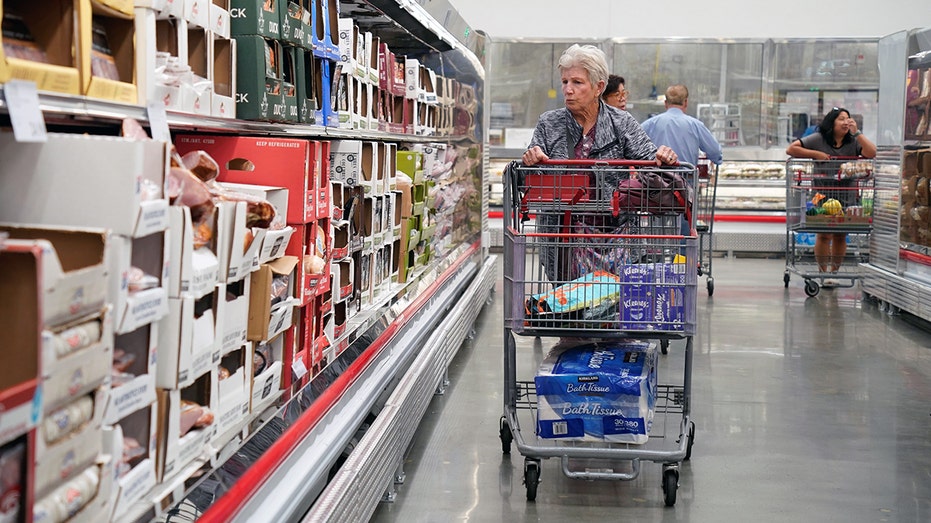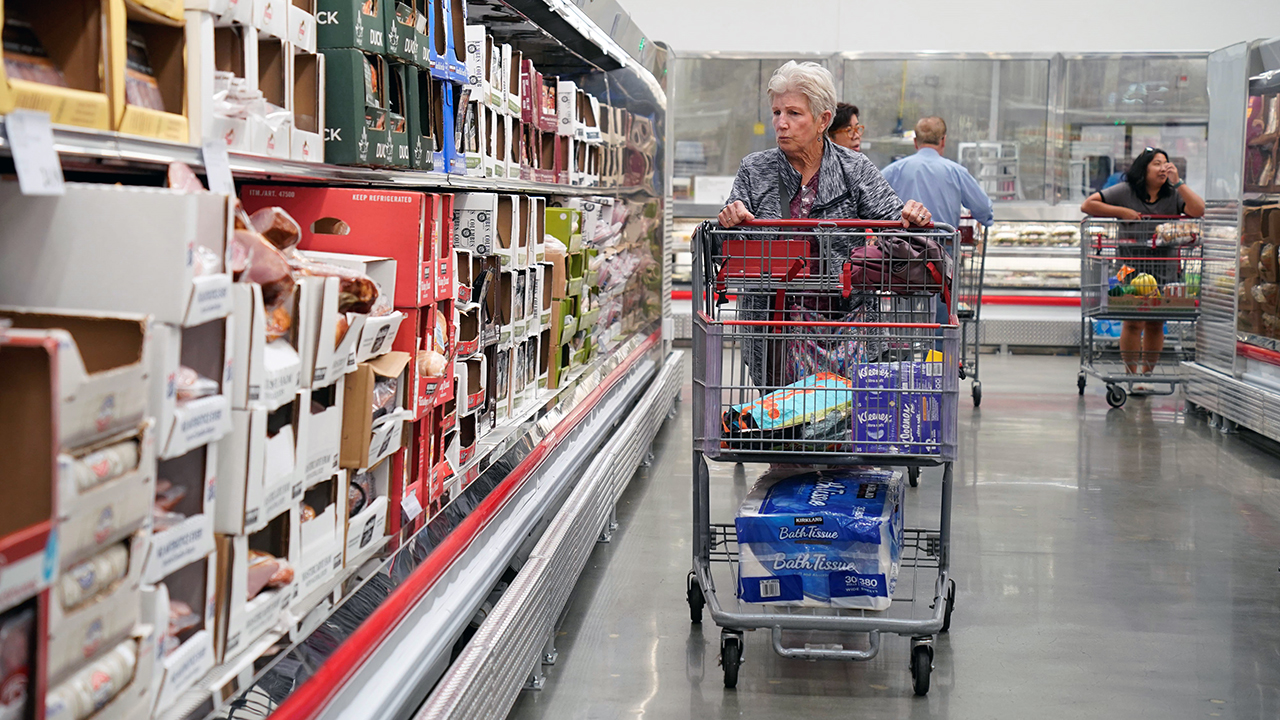Inflation rises more than expected in September as high prices persist
Inflation jumps 0.4% in September, more than expected
Inflation has to get to 2%, and we are on the way there: Austan Goolsbee
Federal Reserve Bank of Chicago President Austan Goolsbee provides insight on the state of the U.S. economy on 'Making Money.'
Inflation rose more than expected in September thanks to a jump in food and housing costs, underscoring the challenge of taming price pressures within the economy.
The Labor Department said Thursday that the consumer price index, a broad measure of the price for everyday goods including gasoline, groceries and rents, rose 0.4% in September from the previous month, a slight improvement from August but still more than expected.
Prices climbed 3.7% from the same time last year, matching the August reading and coming in slightly higher than the 3.6% projected by Refinitiv economists.
Excluding the more volatile measurements of food and energy, so-called core prices increased 0.3% for the month and 4.1% on an annual basis, in line with expectations.
Altogether, the report painted a picture of extremely stubborn inflation that has been slow to retreat, even as the Federal Reserve hiked interest rates to the highest level in two decades.
SOCIAL SECURITY RECIPIENTS TO RECEIVE 3.2% COLA INCREASE IN 2024
"The September CPI report was generally stronger than expected and a reminder that the path to 2% inflation will be choppy," Bank of America chief economist Michael Gapen said in an analyst note.
High inflation has created severe financial pressures for most U.S. households, which are forced to pay more for everyday necessities like food and rent. The burden is disproportionately borne by low-income Americans, whose already-stretched paychecks are heavily affected by price fluctuations.
The inflation increase hit millions of workers' paychecks last month. Average hourly earnings for all employees declined 0.2% in September from the previous month when factoring in the impact of rising consumer prices.
FED SKIPS AN INTEREST RATE HIKE, BUT HIGH MORTGAGE RATES COULD BE HERE TO STAY
"Just because the rate of inflation is stable for now doesn’t mean its weight isn’t increasing every month on family budgets," said Robert Frick, corporate economist with the Navy Federal Credit Union. "And that shelter and food costs rose particularly is especially painful."

Customers shop at a supermarket in Foster City, California, on Sept. 13, 2023. (Li Jianguo/Xinhua via Getty Images / Getty Images)
Housing costs were the biggest driver of inflation last month. Rent costs rose 0.6% for the month and are up 7.2% from the same time last year. Rising rents are concerning because higher housing costs most directly and acutely affect household budgets.
Other price gains also proved persistent in September. Food prices, a visceral reminder of inflation for many Americans, rose 0.2% for the third month straight. Grocery costs rose 0.1% last month and are up 2.4% compared with the same time last year.
IMF SAYS GLOBAL ECONOMY 'LIMPING ALONG' AS IT FACES NEW THREAT FROM ISRAEL-GAZA WAR
Energy costs, meanwhile, rose 1.5%, including a 2.1% jump in gasoline prices and an 8.5% spike in fuel oil.
The Federal Reserve has signaled it is closely watching the report for evidence inflation is finally subsiding as policymakers try to cool the economy with a series of interest rate hikes. Officials have approved 11 rate increases in a span of just 16 months, lifting the benchmark federal funds rate from nearly zero to the highest level since 2001.

Federal Reserve Chair Jerome Powell speaks during a news conference on interest rates, the economy and monetary policy actions at the Federal Reserve Building in Washington, D.C., on June 15, 2022. (OLIVIER DOULIERY/AFP via Getty Images / Getty Images)
The report indicates that while inflation has fallen from a peak of 9.1%, it remains well above the Fed's 2% target.
GET FOX BUSINESS ON THE GO BY CLICKING HERE
Still, policymakers are widely expected to hold interest rates steady at their next meeting in November, despite the slight uptick in inflation. The probability of a 12th rate hike in November is just 7%, according to data from the CME Group's FedWatch tool, which tracks trading.
"The odds may favor the Fed leaving rates unchanged at its November meeting, but rates are still likely to remain high for the foreseeable future," said Mike Loewengart, head of model portfolio construction at Morgan Stanley Global Investment Office. "The Fed is going to want to see a renewed, sustained trend of falling prices before it changes its stance."





















